Related Research Articles
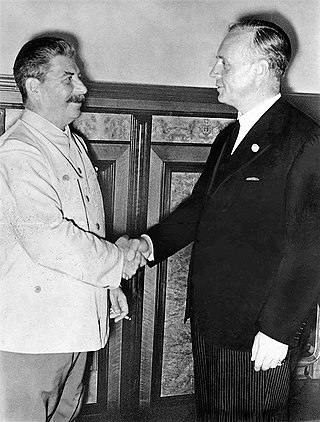
The Molotov–Ribbentrop Pact, officially the Treaty of Non-Aggression between Germany and the Union of Soviet Socialist Republics, and also known as the Hitler–Stalin Pact and the Nazi–Soviet Pact, was a non-aggression pact between Nazi Germany and the Soviet Union, with a secret protocol establishing Soviet and German spheres of influence across Eastern Europe. The pact was signed in Moscow on 24 August 1939 by Soviet Foreign Minister Vyacheslav Molotov and German Foreign Minister Joachim von Ribbentrop.

German–Soviet Union relations date to the aftermath of the First World War. The Treaty of Brest-Litovsk, dictated by Germany ended hostilities between Russia and Germany; it was signed on March 3, 1918. A few months later, the German ambassador to Moscow, Wilhelm von Mirbach, was shot dead by Russian Left Socialist-Revolutionaries in an attempt to incite a new war between Russia and Germany. The entire Soviet embassy under Adolph Joffe was deported from Germany on November 6, 1918, for their active support of the German Revolution. Karl Radek also illegally supported communist subversive activities in Weimar Germany in 1919.

The Baltic Entente was based on Treaty of Good-Understanding and Co-operation signed between Lithuania, Latvia, and Estonia on 12 September 1934 in Geneva. The main objective of the agreement was joint action in foreign policy. It also included commitments to support one another politically and to give diplomatic support in international communication. The endeavour was ultimately unsuccessful, as the combined strength of the three nations and their statements of neutrality were insubstantial in the face of the massive armies of Poland, Germany and the Soviet Union.
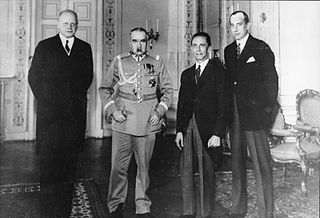
The German–Polish declaration of non-aggression, also known as the German–Polish non-aggression pact, was an agreement between Nazi Germany and the Second Polish Republic that was signed on 26 January 1934 in Berlin. Both countries pledged to resolve their problems by bilateral negotiations and to forgo armed conflict for a period of 10 years. The agreement effectively normalised relations between Poland and Germany, which had been strained by border disputes arising from the territorial settlement in the Treaty of Versailles. The declaration marked an end to an economically damaging customs war between the two countries that had taken place over the previous decade.
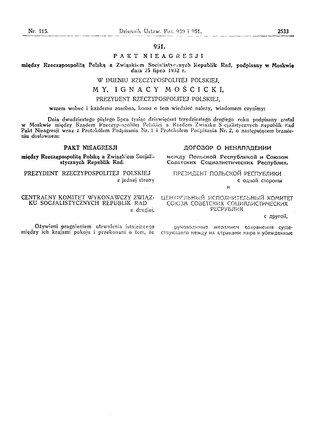
The Soviet–Polish Non-Aggression Pact was a non-aggression pact signed in 1932 by representatives of Poland and the Soviet Union. The pact was unilaterally broken by the Soviet Union on September 17, 1939, during the Soviet invasion of Poland.
The military alliance between the United Kingdom and Poland was formalised by the Anglo-Polish Agreement in 1939, with subsequent addenda of 1940 and 1944, for mutual assistance in case of a military invasion from Nazi Germany, as specified in a secret protocol.
The Polish–Romanian alliance was a series of treaties signed in the interwar period by the Second Polish Republic and the Kingdom of Romania. The first of them was signed in 1921 and, together, the treaties formed a basis for good foreign relations between the two countries that lasted until World War II began in 1939.
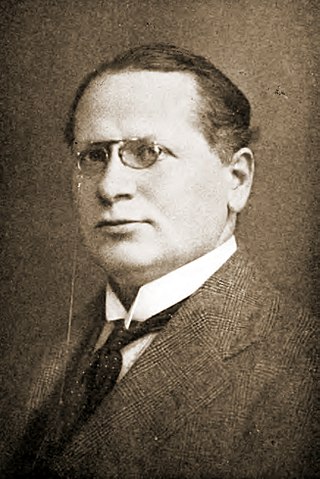
The Litvinov Protocol is the common name of an international peace treaty concluded in Moscow on February 9, 1929. Named after the chief Soviet diplomat moving the negotiations forward, Maxim Litvinov, the treaty provided for immediate implementation of the Kellogg-Briand Pact by its signatories, thereby formally renouncing war as a part of national foreign policy.

The Soviet–Finnish Non-Aggression Pact was a non-aggression treaty signed in 1932 by representatives of Finland and the Soviet Union. The pact was unilaterally renounced by the Soviet Union in 1939 after having committed a deception operation in Mainila in which it shelled its own village and blamed Finland.
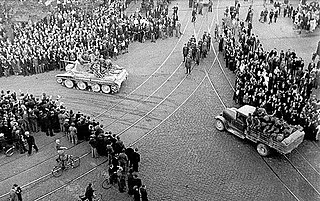
The Soviet occupation of Latvia in 1940 refers to the military occupation of the Republic of Latvia by the Soviet Union under the provisions of the 1939 Molotov–Ribbentrop Pact with Nazi Germany and its Secret Additional Protocol signed in August 1939.
The Franco-Soviet Treaty of Mutual Assistance was a bilateral treaty between France and the Soviet Union with the aim of enveloping Nazi Germany in 1935 to reduce the threat from Central Europe. It was pursued by Maxim Litvinov, the Soviet foreign minister, and Louis Barthou, the French foreign minister, who was assassinated in October 1934, before negotiations had been finished.

The German–Latvian Non-Aggression Pact was signed in Berlin on June 7, 1939.

The Soviet–Lithuanian Mutual Assistance Treaty was a bilateral treaty signed between the Soviet Union and Lithuania on October 10, 1939. According to provisions outlined in the treaty, Lithuania would acquire about one fifth of the Vilnius Region, including Lithuania's historical capital, Vilnius, and in exchange would allow five Soviet military bases with 20,000 troops to be established across Lithuania. In essence the treaty with Lithuania was very similar to the treaties that the Soviet Union signed with Estonia on September 28, and with Latvia on October 5. According to official Soviet sources, the Soviet military was strengthening the defenses of a weak nation against possible attacks by Nazi Germany. The treaty provided that Lithuania's sovereignty would not be affected. However, in reality the treaty opened the door for the first Soviet occupation of Lithuania and was described by The New York Times as "virtual sacrifice of independence."

The Molotov–Ribbentrop Pact was an August 23, 1939, agreement between the Soviet Union and Nazi Germany colloquially named after Soviet foreign minister Vyacheslav Molotov and German foreign minister Joachim von Ribbentrop. The treaty renounced warfare between the two countries. In addition to stipulations of non-aggression, the treaty included a secret protocol dividing several eastern European countries between the parties.

Relevant events began regarding the Baltic states and the Soviet Union when, following Bolshevist Russia's conflict with the Baltic states—Lithuania, Latvia and Estonia—several peace treaties were signed with Russia and its successor, the Soviet Union. In the late 1920s and early 1930s, the Soviet Union and all three Baltic States further signed non-aggression treaties. The Soviet Union also confirmed that it would adhere to the Kellogg–Briand Pact with regard to its neighbors, including Estonia and Latvia, and entered into a convention defining "aggression" that included all three Baltic countries.
The timeline of the occupation of the Baltic states lists key events in the military occupation of the three countries – Estonia, Latvia and Lithuania – by the Soviet Union and by Nazi Germany during World War II.
The timeline of the Winter War is a chronology of events leading up to, culminating in, and resulting from the Winter War. The war began when the Soviet Union attacked Finland on 30 November 1939 and it ended 13 March 1940.
The timeline of the Molotov–Ribbentrop Pact is a chronology of events, including Molotov–Ribbentrop Pact negotiations, leading up to, culminating in, and resulting from the Molotov–Ribbentrop Pact. The Treaty of Non-aggression between Nazi Germany and the Soviet Union was signed in the early hours of 24 August 1939, but was dated 23 August.

The background of the occupation of the Baltic states covers the period before the first Soviet occupation on 14 June 1940, stretching from independence in 1918 to the Soviet ultimatums in 1939–1940. Lithuania, Latvia, and Estonia gained independence in the aftermath of the Russian revolutions of 1917 and the German occupation which in the Baltic countries lasted until the end of World War I in November 1918. All three countries signed non-aggression treaties with the Soviet Union in the 1920s and 1930s. Despite the treaties, in the aftermath of the 1939 German–Soviet pact, Estonia, Latvia and Lithuania were occupied, and thereafter forcibly incorporated into the Soviet Union, in 1940.

The Soviet–French Non–Aggression Pact was a Non–Aggression Pact concluded on November 29, 1932 between the Soviet Union and France. The agreement was preceded by lengthy negotiations, which began back in 1928.
References
- The Great Soviet Encyclopedia, 3rd Edition (1970-1979);
- JSTOR: The Slavonic and East European Review, Vol. 55, No. 1 (Jan., 1977), pp. 45-64